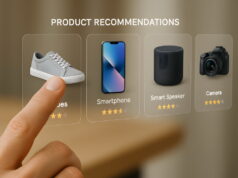The extensive international network is gaining a reputation amongst Indian women at a quick pace.

Over forty percent of Indian girls were aware of the mobile internet in 2019, compared to simply 19% a year ago, according to a mobile gender gap report (PDF by GSMA. This alternate body represents the interests of cell community operators internationally.
GSMA performed surveys across 18 nations, interviewing over 1,000 adults in each country and a pair of 000 in India and China.
One viable aspect behind the growing popularity of the cellular network in India is the appearance of Reliance Jio in September 2016, which has driven down information charges to the ground. The telco upstart, headed with the aid of India’s richest guy Mukesh Ambani, additionally added an “efficaciously free” 4G-enabled function smartphone into the marketplace.
The GSMA’s cellular connectivity index, which tracks international locations’ progress on crucial enablers of cellular network access and use, suggests a 26% boom in the affordability of cell internet in India between 2014 and 2017, the largest such upward trend in any country during this period.
Even now, in low- and middle-income countries, girls are 23% less likely than men to use mobile internet. The hole has, but, narrowed from 26% in 2017, GSMA determined.
“This has been pushed in a massive part by a closure inside the mobile net gender gap in India in which changing market dynamics have made mobile internet less costly,” the United Kingdom-based association noted.
Still, there’s a long way to go for general parity.
What’s preventing women?
An equal share of males and females in India use telephones to make and receive calls.
But the gender divide is closely stated for more excellent state-of-the-art services, such as browsing the internet or downloading apps.
“Women highlighted affordability, literacy, and virtual capabilities, a perceived loss of relevance, and protection and safety issues as the pinnacle limitations wanting to be addressed in a good way to decrease the mobile gender gap further,” GSMA stated in a press release on Feb. 20.
Literacy became the biggest drawback for women when it came to proudly owning a handset and its usage to gain access to the web.














